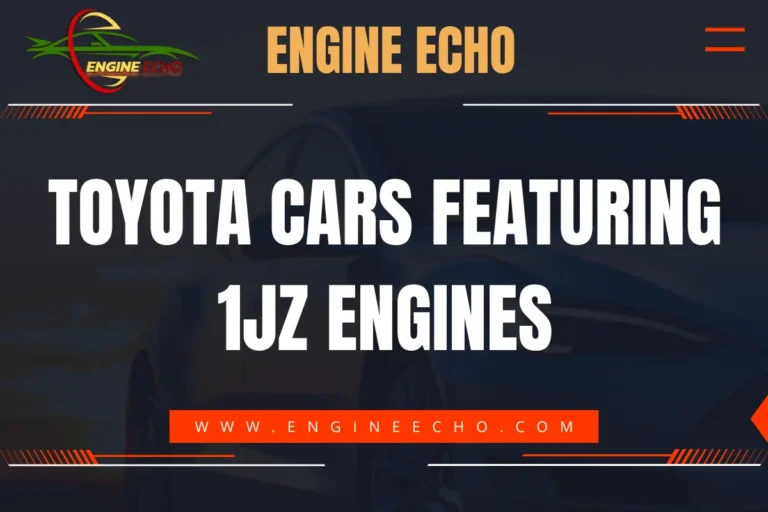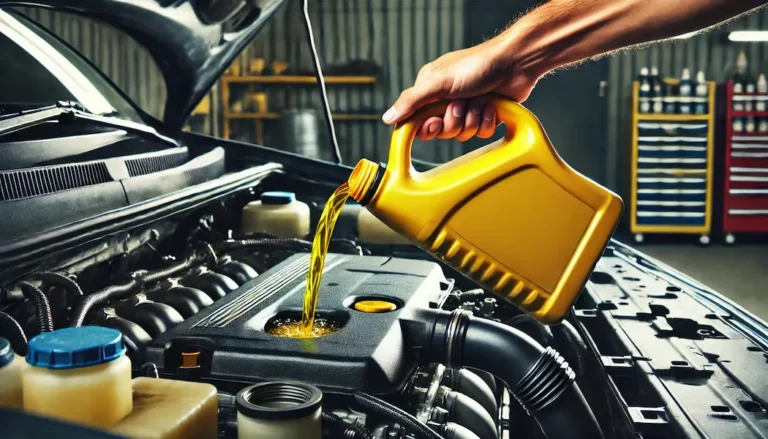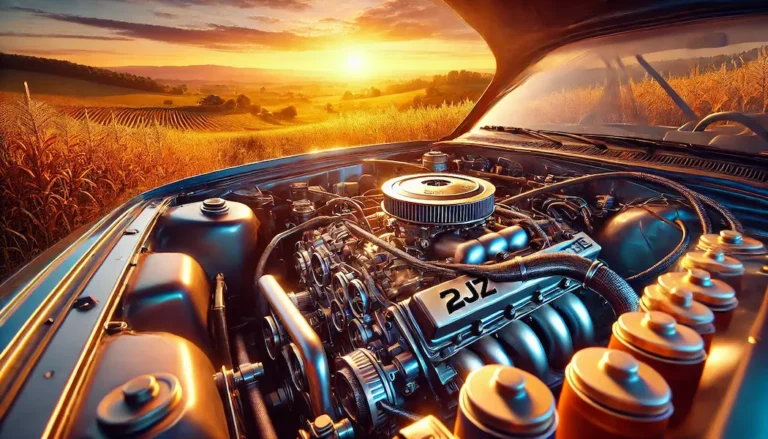Key Engine Components and Their Functions

Key Takeaways
- This article covers the major engine components and their specific roles.
- Explains how these components work together to power a vehicle.
- Highlights the importance of understanding engine parts for diagnosing issues.
- Explores advancements in component technology for better efficiency.
- Stresses the need for proper maintenance to ensure engine longevity.
Introduction to Engine Components
Engines are the heart of any vehicle. They’re what turn fuel into the power that gets you moving. If you’ve ever taken a look under the hood, you probably realized pretty quickly—it’s a lot more than just nuts and bolts down there. Understanding how all these parts work together can make a world of difference when it comes to troubleshooting or simply getting the best performance out of your vehicle.
Cylinder Block
What is a Cylinder Block?
The cylinder block is the backbone of the engine. It’s where everything starts—it houses the engine’s cylinders, pistons, and crankcase. Honestly, the cylinder block doesn’t get enough credit. I didn’t even realize how important its design was until I started working on engines myself. It’s the backbone of the whole thing, supporting every other part of the engine.
Functions of the Cylinder Block:
- Structural Support: It’s what holds everything together, quite literally. Without it, all other parts would have no anchor.
- Cooling Pathways: To prevent the engine from overheating, the cylinder block has built-in cooling channels to allow coolant to flow.
- Lubrication: Provides essential oil passages to ensure that all moving parts are properly lubricated, reducing wear and tear.
Cylinder Head
Overview of the Cylinder Head
Sitting on top of the cylinder block, the cylinder head plays a crucial role in sealing the combustion chamber and managing airflow. If you’re ever troubleshooting an engine problem, the cylinder head is a great place to start looking, especially when dealing with valve issues.
Key Components Inside the Cylinder Head:
- Valves: Allow for precise control of fuel intake and exhaust gases.
- Spark Plugs: Ignite the air-fuel mixture, creating the combustion that drives the engine.
- Ports: Manage air and fuel entry while facilitating exhaust expulsion.
Functions of the Cylinder Head:
- Sealing the Combustion Chamber: Keeps the combustion process efficient by sealing in the high-pressure gases.
- Air and Fuel Management: Makes sure that the engine is breathing properly, whether it’s through managing fuel intake or expelling exhaust gases. If there’s one thing I’ve learned, it’s that the cylinder head is integral for maintaining the balance between power and efficiency.
Pistons
What are Pistons?
Pistons are the powerhouses of the engine. These cylindrical components move up and down within the engine’s cylinders, playing a central role in the combustion process. I’ve worked on enough engines to know that when pistons are in bad shape, the entire engine suffers.
Functions of Pistons:
- Energy Conversion: They turn the energy from fuel combustion into mechanical work, driving the crankshaft.
- Compression and Combustion: Pistons compress the air-fuel mixture before ignition, making the combustion process more effective.
Crankshaft
Crankshaft Overview
For me, the crankshaft is where the magic happens. It takes the up-and-down motion from the pistons and turns it into the rotation that actually gets your car moving. Without it, your vehicle wouldn’t go anywhere, no matter how good the other components are.
Key Functions of the Crankshaft:
- Motion Conversion: Converts the up-and-down motion of the pistons into rotational power.
- Power Distribution: Distributes this power to the transmission, allowing the car to move forward.
Camshaft
Role of the Camshaft
The camshaft controls the opening and closing of the engine’s intake and exhaust valves. Precision is everything here. I remember working on a high-performance engine with a DOHC camshaft, and the timing was so perfect that the engine ran smoother than I could have imagined. It’s an unsung hero in engine performance.
Timing and Precision:
- Synchronization: It’s synchronized with the crankshaft to ensure that the valves open and close at the perfect time.
- Valve Timing: This precision helps the engine run smoothly and efficiently, making it more responsive.
Types of Camshafts:
- Single Overhead Cam (SOHC): Controls both the intake and exhaust valves with one camshaft.
- Dual Overhead Cam (DOHC): Uses separate camshafts for intake and exhaust valves, offering better performance.
Valves
Types of Engine Valves:
- Intake Valves: Allow the air-fuel mixture into the combustion chamber.
- Exhaust Valves: Expel the spent gases after combustion.
Functions of Valves:
- Regulating Airflow: They regulate how much fuel and air enter the engine, which directly affects performance.
- Exhaust Management: Ensures that exhaust gases leave the engine efficiently, which is critical for keeping things running smoothly.
Connecting Rods
What are Connecting Rods?
The connecting rods link the pistons to the crankshaft, transferring the pistons’ motion into usable mechanical force. I’ve come across engines with damaged connecting rods, and let me tell you, without these, the entire system falls apart.
Key Functions:
- Motion Transfer: Transfer the motion from the pistons to the crankshaft.
- Force Endurance: These rods are built to withstand the immense pressure generated during combustion.
Oil Pan
Overview of the Oil Pan
People tend to forget about the oil pan, but it’s super important. I’ll admit, I didn’t give it much thought myself until I had to fix an overheated engine because of a cracked oil pan. Lesson learned!
Functions of the Oil Pan:
- Oil Storage: Holds engine oil, which is vital for lubrication.
- Cooling Assistance: Helps cool the engine oil before it circulates back through the engine.
Common Materials Used:
- Aluminum or Steel: These materials are light but durable, aiding in heat dissipation.
Fuel Injectors
What are Fuel Injectors?
Fuel injectors are like your engine’s personal chef—they make sure just the right amount of fuel gets in for the perfect ‘recipe’ to keep things running smoothly. I’ve worked on engines where dirty or clogged injectors were the culprit behind performance issues, so keeping these clean is something I always recommend.
Types of Fuel Injectors:
- Port Injection: Sprays fuel into the intake manifold.
- Direct Injection: Sprays fuel directly into the combustion chamber, increasing efficiency.
Functions and Efficiency:
- Precise Fuel Delivery: Fuel injectors ensure that the right amount of fuel is delivered, optimizing combustion.
- Enhanced Combustion: Helps achieve more complete combustion, which reduces waste and improves fuel efficiency.
Turbocharger (Optional Component)
What is a Turbocharger?
I’m a huge fan of turbochargers. They force extra air into the engine, increasing both power and efficiency. I still remember the first time I installed a turbocharger—it was a game changer in terms of performance.
Functions of the Turbocharger:
- Boosting Power: Turbochargers help small engines produce more power by forcing more air into the combustion chamber.
- Fuel Efficiency: By improving combustion, they help engines get more miles per gallon.
Exhaust System
Components of the Exhaust System:
- Exhaust Manifold: Collects gases from the cylinders.
- Catalytic Converter: Reduces harmful emissions.
- Muffler: Dampens the noise produced by the engine.
Key Functions:
- Gas Expulsion: Removes exhaust gases from the engine efficiently.
- Emission Control: Helps lower the vehicle’s environmental impact by reducing harmful emissions.
Cooling System
Components of the Cooling System:
- Radiator: Dissipates heat from the engine.
- Water Pump: Circulates coolant through the engine.
- Thermostat: Regulates the coolant flow to maintain optimal temperature.
Functions of the Cooling System:
- Temperature Regulation: Keeps the engine from overheating. I’ve learned from personal experience that keeping an eye on the cooling system can save you from a lot of headaches.
- Thermal Efficiency: Maintains a stable operating temperature, improving engine performance.
Ignition System
Key Parts of the Ignition System:
- Spark Plugs: Ignite the air-fuel mixture, which is crucial for starting the engine.
- Ignition Coil: Converts the battery’s voltage into a high-voltage spark.
- Distributor: Sends the spark to the correct cylinder.
Functions of the Ignition System:
- Fuel Combustion: Starts the combustion process that drives the engine.
- Engine Startup: Ensures that the engine fires up smoothly and efficiently.
Case Studies
Case Study 1: Evolution of Pistons in Modern Engines
Over the years, advancements in piston technology have led to lighter, more durable designs that increase fuel efficiency and engine performance. I’ve noticed the difference firsthand in how smoothly engines run today compared to older models.
Case Study 2: Turbocharger Integration in Commercial Vehicles
Turbochargers have seriously changed the game for commercial trucks. When I worked on those, I saw firsthand how even smaller engines could handle big loads with no problem, all thanks to that little turbo boost.
Conclusion
Every part of your engine, from the pistons to the cooling system, works together to keep things running like clockwork. When everything clicks, you get the smooth ride we all love. From my personal experience, I can say that these parts are all interdependent, and when they work together seamlessly, they transform fuel into power. Understanding these components not only helps in troubleshooting but also ensures you’re getting the best performance out of your vehicle. Keeping these parts in sync is what makes engines reliable, and for me, this understanding is not just practical—it’s a passion.
Frequently Asked Questions (FAQs)
1. What is the most critical component of an engine?
I’d say the engine block and crankshaft are the most critical, as they provide the structure and convert motion into power.
2. How do pistons and the crankshaft work together?
Pistons transfer the force of combustion to the crankshaft, which then converts this linear motion into rotational energy.
3. Can you replace engine components individually?
Yes, components like spark plugs and fuel injectors can be replaced individually, but it’s important to consider how they interact with other parts.
4. Why is the turbocharger important for engine efficiency?
A turbocharger forces more air into the engine, improving fuel efficiency and boosting power, making it a great addition for performance enhancement.
Thanks for checking out this article on EngineEcho.com! Hope you found this article: "Key Engine Components and Their Functions" helpful! If you liked it and want to dive into more car engine topics, head over to our homepage. There's always something new to discover in the world of engines. Enjoy your reading journey!
Check out our previous article: Find a Reliable Engine Shop Near You






